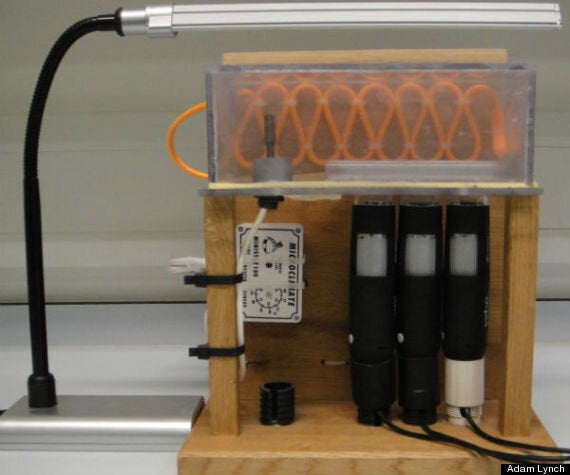A British student has come up with a way to build a £100,000 microscope for less than £200.
Adam Lynch, a PhD student from Brunel University London hacked together his own instrument to study cell motility - essentially, how cells move.
His specialism? Snail immune systems. Obviously.
But to study that field, you need some fairly hefty, specialised equipment. And usually these microscopes cost hundreds of thousands of pounds, and are used in everything from cancer research to fertility studies.
Still, Lynch reckoned he could do it for less. And he was right. In fact, he ended up developing a version that cost him just £160.

In a press release he explains that microscopes for studying cell motility aren't actually used to take high-resolution pictures, but instead to clarify an image into a sharp, digital focus - so a computer can easily read black cells moving across a white background.
"When you're looking at motility in cells you're only interested in the data - how fast the cell gets from A to B means more than a high-resolution image. Even with a high-cost microscope you will reduce the image down so that it's just a black dot on the screen moving against a white background so that it's easier for a computer to read."
"People don't realise that you can quite easily make a high-magnification microscope, it's just a matter of getting a lens and the right angle of lighting, so when I turned off the lighting that came with the instrument and used external lights I found I could see the cells quite clearly."
The result - after combining three of the microscopes - was an instrument that was not as efficient as a professional version, but not far off - and about 500 times less expensive. It's an ingenious solution, and well worth a paper all of its own. And indeed you can read the full paper here.